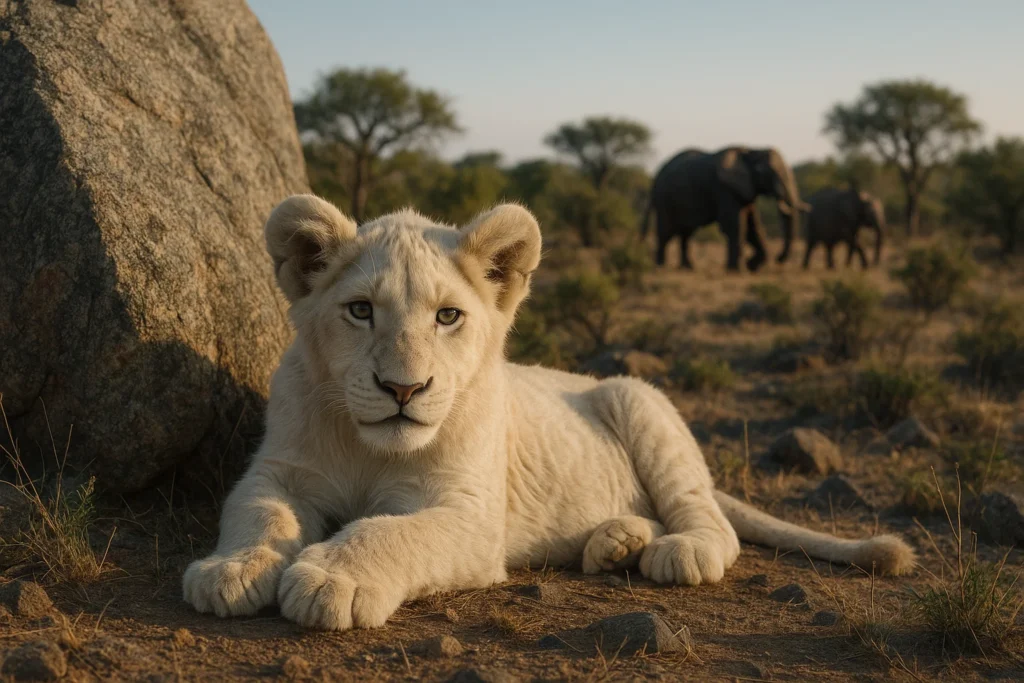Capturing the Big Five—lion, leopard, elephant, rhino, and buffalo—is a dream for many wildlife photographers. But photographing these legendary animals goes beyond just pointing and shooting. Each species presents unique challenges in terms of behavior, lighting, and movement. In this guide, we’ll walk you through practical tips to improve your chances of taking powerful, respectful, and technically sound photos of Africa’s most iconic wildlife.
Whether you’re packing a pro DSLR or shooting with a compact mirrorless camera, these Big Five photography tips will help you elevate your safari experience and return home with images that tell a story.
Understanding the Big Five: More than just a photo checklist
Originally a term used by hunters to describe the five most dangerous animals to hunt on foot, the “Big Five” has become a photographic goal for modern safari travelers. But beyond the prestige, these animals represent a wide range of behaviors, habitats, and visibility patterns.
Tip: Patience and ethical awareness are key. Some of the best wildlife photography in Africa comes from time spent quietly observing.
Best camera settings for Big Five photography
Before diving into each animal, let’s quickly touch on universal technical settings that can improve your wildlife shots:
- Shutter speed: Use at least 1/1000s to freeze motion, especially for predators on the move.
- Aperture: f/4 to f/6.3 offers a balance between background blur and enough depth of field.
- ISO: Adjust depending on light—don’t be afraid of ISO 1600+ in early morning or dusk.
- Focus mode: Use AI Servo/Continuous Autofocus and single-point tracking.
- Lens: A 100–400mm zoom is ideal for versatility and distance.
Photographing lions: Play with golden light and pride dynamics
Lions are usually most active around sunrise and sunset—known as the golden hours. These low-light periods create dramatic lighting and natural contrast.
Tips for lion photography:
- Focus on eyes and expressions when lions yawn, roar, or interact with cubs.
- Use side lighting for dramatic portraits.
- Keep your distance and avoid obstructing their space. Use your zoom lens to frame tight.
Photographing leopards: Stealth, shadows, and sharpness
Leopards are elusive and prefer thick vegetation or rocky outcrops. Spotting one is a highlight; photographing one well is a real accomplishment.
Tips for leopard photography:
- Keep your camera ready at all times—leopard sightings can be brief.
- Watch the trees: leopards love perching in branches, and backlighting can enhance their outline.
- Use a fast shutter speed to capture sudden movements or leaps.
Photographing elephants: Detail, emotion, and scale
Elephants are majestic and often close to safari vehicles, allowing for intimate portraits or dramatic wide-angle shots.
Tips for elephant photography:
- Focus on eyes and wrinkles to capture texture and emotion.
- Go wide: show elephants in their environment to express their size.
- Watch for interactions: mothers with calves, trunk gestures, and mud baths are great moments.
Photographing rhinos: Respect distance and highlight shape
Rhinos, especially black rhinos, are more shy and often keep their distance. You may spot them in open grasslands or near waterholes.
Tips for rhino photography:
- Silhouettes work beautifully at sunrise or sunset—rhino profiles are instantly recognizable.
- Use the terrain: tall grass or dust can create atmospheric shots.
- Stay downwind and quiet: these animals have poor eyesight but keen senses.
Photographing buffalo: Power, presence, and patience
Often underestimated, buffalo photography can be striking—especially in black-and-white. Large herds create impressive scenes, while solo bulls offer intense expressions.
Tips for buffalo photography:
- Wait for eye contact or group symmetry.
- Use contrast to highlight their rugged features.
- Don’t rush: buffaloes often stand still, giving you time to compose.
Ethical considerations when photographing the Big Five
Respect the animals first. Never ask your guide to get closer in unsafe or intrusive ways. Avoid flash photography, loud noises, or sudden movements. Ethical safari animal photo tips ensure better long-term sightings and contribute to conservation.
For more on responsible practices, check out How to photograph wildlife ethically.
Final thoughts: Your Big Five moments, your unique story
Photographing the Big Five is about more than just ticking boxes—it’s a chance to connect with the wild and preserve moments that matter. Use your gear wisely, respect the animals, and be ready for the unexpected.
Want to make the most of your camera while keeping it safe? Read How to protect your camera gear on safari.
FAQs
The best camera for Big Five photography is a DSLR or mirrorless camera with fast autofocus, high burst rate, and interchangeable lenses. A 100–400mm telephoto lens is ideal for capturing animals at a distance without disturbing them.
Early mornings and late afternoons offer the best light and wildlife activity. These “golden hours” provide soft lighting and increase your chances of spotting active predators like lions and leopards.
A monopod is highly recommended for stability when using long lenses, especially during game drives. Tripods are more useful at lodges or hides where you have space to set up without movement.
Keep a respectful distance, avoid using flash, and never pressure your guide to approach animals too closely. Ethical wildlife photography prioritizes the animals’ wellbeing and natural behavior.
Yes, but it depends on the park and your luck. Parks like Kruger, Serengeti, and Masai Mara offer high chances. Be prepared to spend several days and be patient—especially when trying to spot elusive leopards or black rhinos.





